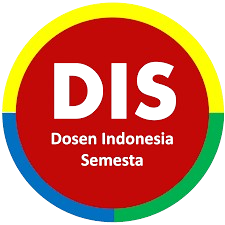FROM CLASSROOM TO CLINIC: AN ESP NEEDS ANALYSIS FOR MIDWIFERY STUDENTS
DOI:
https://doi.org/10.36526/ln.v9i1.5264Keywords:
English for Specific Purposes (ESP), English Language Needs, Midwifery StudentsAbstract
The increasing globalization of healthcare requires midwives to develop effective English communication skills since it has become the standard of international communication in healthcare facilities. This research aims to evaluate the English language needs of midwifery students and identify gaps in current instructional practices. The research design was qualitative, and data was collected through questionnaire responses, semi-structured interviews, and document analysis. The samples included 30 participants from midwifery students, instructor, and clinical supervisor. The findings indicated that all students acknowledged medical terminology and patient communication skills as vital subjects. Students expressed anxiety and a lack of readiness using English in clinical settings because of the substantial difference between classroom learning and real-world practice. The study finds that English for Specific Purposes (ESP) curricula do not adequately address the precise linguistic requirements that characterize midwifery practice. Developing curricula for midwifery students should use authentic material and contextualized scenarios, integrated with language training by clinical supervisors and support from educators, may assist students in real-world engagement to enhance clinical care across settings. Future research should examine larger factors that shape language education in health services.
References
Al Shamsi, H., Almutairi, A. G., Al Mashrafi, S., & Al Kalbani, T. (2020). Implications of language barriers for healthcare: A systematic review. Oman Medical Journal, 35(2), 1–7. https://doi.org/10.5001/OMJ.2020.40
Alhassan, M. (2019). Nursing and midwifery students’ communication skills training: A systematic review. Journal of Advances in Medicine and Medical Research, 30(2), 1–10. https://doi.org/10.9734/jammr/2019/v30i230167
Birt, L., Scott, S., Cavers, D., Campbell, C., & Walter, F. (2016). Member checking: A tool to enhance trustworthiness or merely a nod to validation? Qual Health Res, 26(13), 1802–1811. https://doi.org/10.1177/1049732316654870
Campbell, S., Greenwood, M., Prior, S., Shearer, T., Walkem, K., Young, S., Bywaters, D., & Walker, K. (2020). Purposive sampling: complex or simple? Research case examples. Journal of Research in Nursing, 25(8), 652–661. https://doi.org/10.1177/1744987120927206
Cohen, L., Manion, L., & Morrison, K. (2018). Research Methods in Education. Routledge.
Creswell, J. W., & Creswell, J. D. (2018). Research Design: Qualitative, Quantitative, and Mixed Methods Approaches (Fifth Edit). SAGE Publications, Inc.
Dou, A. Q., Chan, S. H., & Win, M. T. (2023). Changing visions in ESP development and teaching: Past, present, and future vistas. Frontiers in Psychology, 14, 1–10. https://doi.org/10.3389/fpsyg.2023.1140659
Gerchow, L., Burka, L. R., Miner, S., & Squires, A. (2021). Language barriers between nurses and patients: A scoping review. Patient Educ Couns, 104(3), 534–553. https://doi.org/10.1016/j.pec.2020.09.017.Language
Golzar, J., & Tajik, O. (2022). Convenience sampling. IJELS: International Journal of Education and Language Studies, 1(2), 72–77. https://doi.org/10.4135/9781412972024.n551
Hajiyeva, B. (2024). Language anxiety in ESL learners: Causes, effects, and mitigation strategies. Euro-Global Journal of Linguistics and Language Education, 1(1), 119–133. https://doi.org/https://doi.org/10.69760/pn9wgv05
Hariyanto, H., Joyoatmojo, S., Nurkamto, J., & Gunarhadi, G. (2022). Needs analysis of English for midwifery purposes at midwifery academy of Harapan Mulya Ponorogo. IJIET (International Journal of Indonesian Education and Teaching), 6(1), 49–60. https://doi.org/10.24071/ijiet.v6i1.1841
Hidayati, D. N., & Haryati, S. (2018). Target and learning needs in English for midwifery students. Leksema: Jurnal Bahasa Dan Sastra, 3(1), 71–80. https://doi.org/10.22515/ljbs.v3i1.1122
Jibran, A. A., Samtidar, S., & Abduh, A. (2024). A need analysis on English teaching materials for midwifery department students at the Muslim University of Indonesia (UMI). Celebes Journal of Language Studies, 4(1), 83–96. https://doi.org/10.51629/cjls.v4i1.185
Karunarathna, I., Bandara, S., Gunasena, P., Hapuarachchi, T., Ekanayake, U., Rajapaksha, S., Gunawardana, K., Aluthge, P., Jayawardana, A., De Alvis, K., & Gunathilake, S. (2024). Data collection in research: Methods, challenges, and ethical considerations. Uva Clinical Research, 1–24. https://doi.org/10.13140/RG.2.2.33267.13605
Kong, Y. (2021). The role of experiential learning on students’ motivation and classroom engagement. Frontiers in Psychology, 12, 1–4. https://doi.org/10.3389/fpsyg.2021.771272
Kyei, J., Dzansi, G., Acheampong, A. K., Adjei, C. A., Ohene, L. A., Adjorlolo, S., Asante, I. N. A., Woolley, P., Nyante, F., & Aziato, L. (2023). Factors influencing nurses and midwives’ participation in research: A qualitative study. Nursing & Midwifery Research Journal, 19(1), 5–21. https://doi.org/10.1177/0974150x221146075
Ma’rufa, I. M. U. (2023). Developing English Language Textbook for Midwifery Students at Institute of Health Science in Sampang, Indonesia. Surakarta English and Literature Journal, 6(1), 124–139.
Mao, F., & Zhou, J. (2024). A needs analysis of ESP courses in colleges of art and design: Consensus and divergence. PLoS ONE, 19(6), 1–23. https://doi.org/10.1371/journal.pone.0305210
Mebert, L., Barnes, R., Dalley, J., Gawarecki, L., Ghazi-Nezami, F., Shafer, G., Slater, J., & Yezbick, E. (2020). Fostering student engagement through a real-world, collaborative project across disciplines and institutions. Higher Education Pedagogies, 5(1), 30–51. https://doi.org/10.1080/23752696.2020.1750306
Naeem, M., Ozuem, W., Howell, K., & Ranfagni, S. (2023). A Step-by-Step Process of Thematic Analysis to Develop a Conceptual Model in Qualitative Research. International Journal of Qualitative Methods, 22, 1–18. https://doi.org/10.1177/16094069231205789
Noviyanti, L. W., Ahsan, A., & Sudartya, T. S. (2021). Exploring the relationship between nurses’ communication batisfaction and patient safety culture. Journal of Public Health Research, 10(2), 317–320. https://doi.org/10.4081/jphr.2021.2225
Paulhus, D. (2020). Socially desirable responding self-reports. Encyclopedia of Personality and Individual Differences, 1–4. https://doi.org/10.1007/978-3-319-28099-8
Purabdollah, M., Zamanzadeh, V., Ghahramanian, A., Valizadeh, L., Mousavi, S., & Ghasempour, M. (2023). Competencies expected of undergraduate nursing students: A scoping review. Nursing Open, 10(12), 7487–7508. https://doi.org/10.1002/nop2.2020
Silvia, R. (2015). ESP needs analysis for midwifery students: A learner centered approach. Scientia Journal, 3(4), 290–294.
Supunya, N. (2023). A systematic review on ESP teachers: Current focus, collaboration, and sustainability. REFLections, 30(2), 287–317. https://doi.org/10.61508/refl.v30i2.267295
Suryanti, S., Ahmed, I., Hamzah, H., & Tunru, I. S. (2025). Bridging language gaps in medical education: The role of english language teaching in English-medium instruction. Preprints.Org, 1–5. https://doi.org/10.20944/preprints202502.1277.v1
Warde, F., Papadakos, J., Papadakos, T., Rodin, D., Salhia, M., & Giuliani, M. (2018). Plain language communication as a priority competency for medical professionals in a globalized world. Canadian Medical Education Journal, 9(2), e52-59. https://doi.org/10.36834/cmej.36848
Yang, B. H., Lo, K. W., Li, Y. S., & Chao, K. Y. (2024). Effects of integration interdisciplinary learning on student learning outcomes and healthcare-giving competence: a mixed methods study. BMC Nursing, 23(1), 1–13. https://doi.org/10.1186/s12912-024-02260-w
Downloads
Published
How to Cite
Issue
Section
License
Copyright (c) 2025 Wahyu Adri Wirawati, Roudlotun Nurul Laili, Muhammad Nashir

This work is licensed under a Creative Commons Attribution-NonCommercial-ShareAlike 4.0 International License.
This work is licensed under a Creative Commons Attribution-ShareAlike 4.0 International License.


















